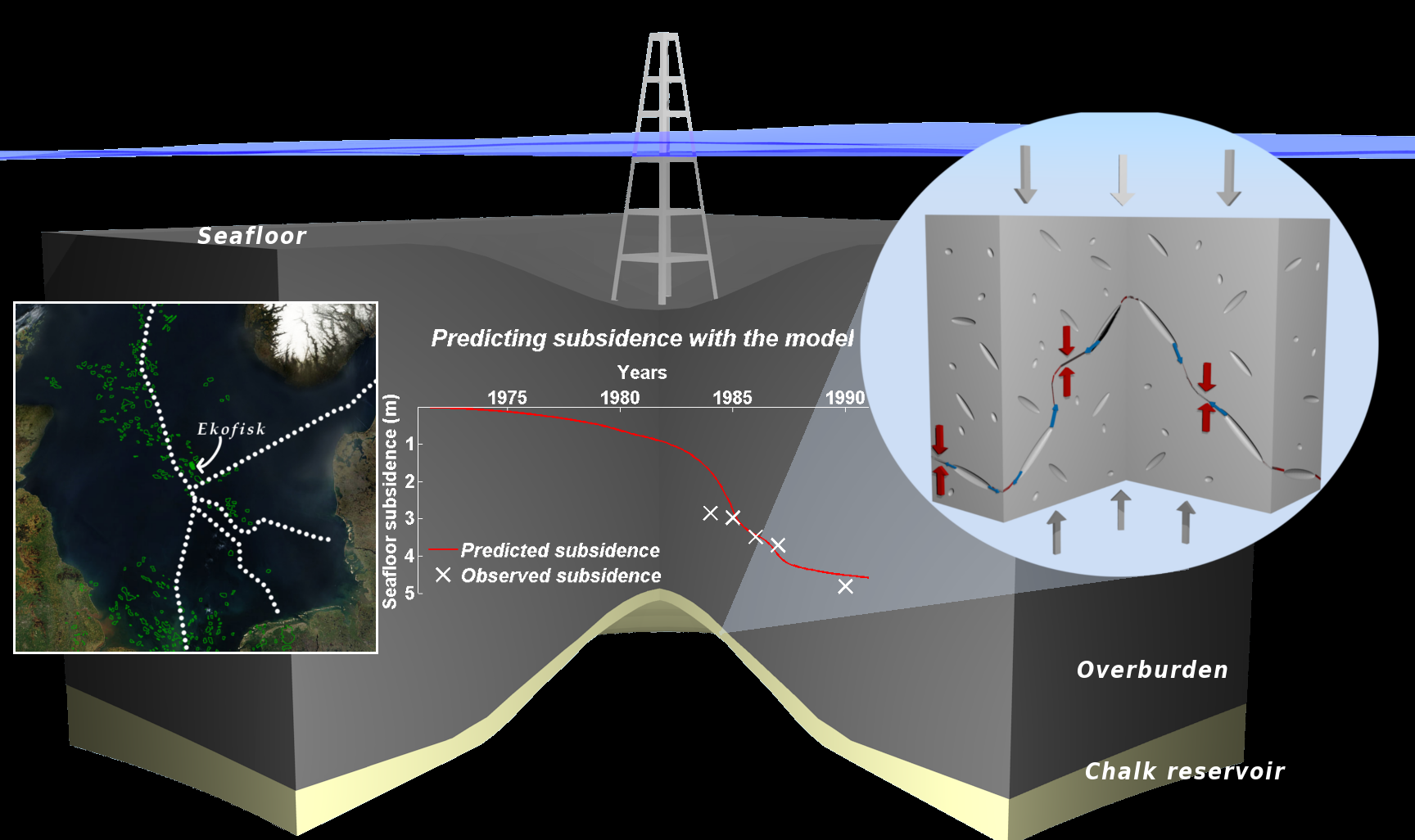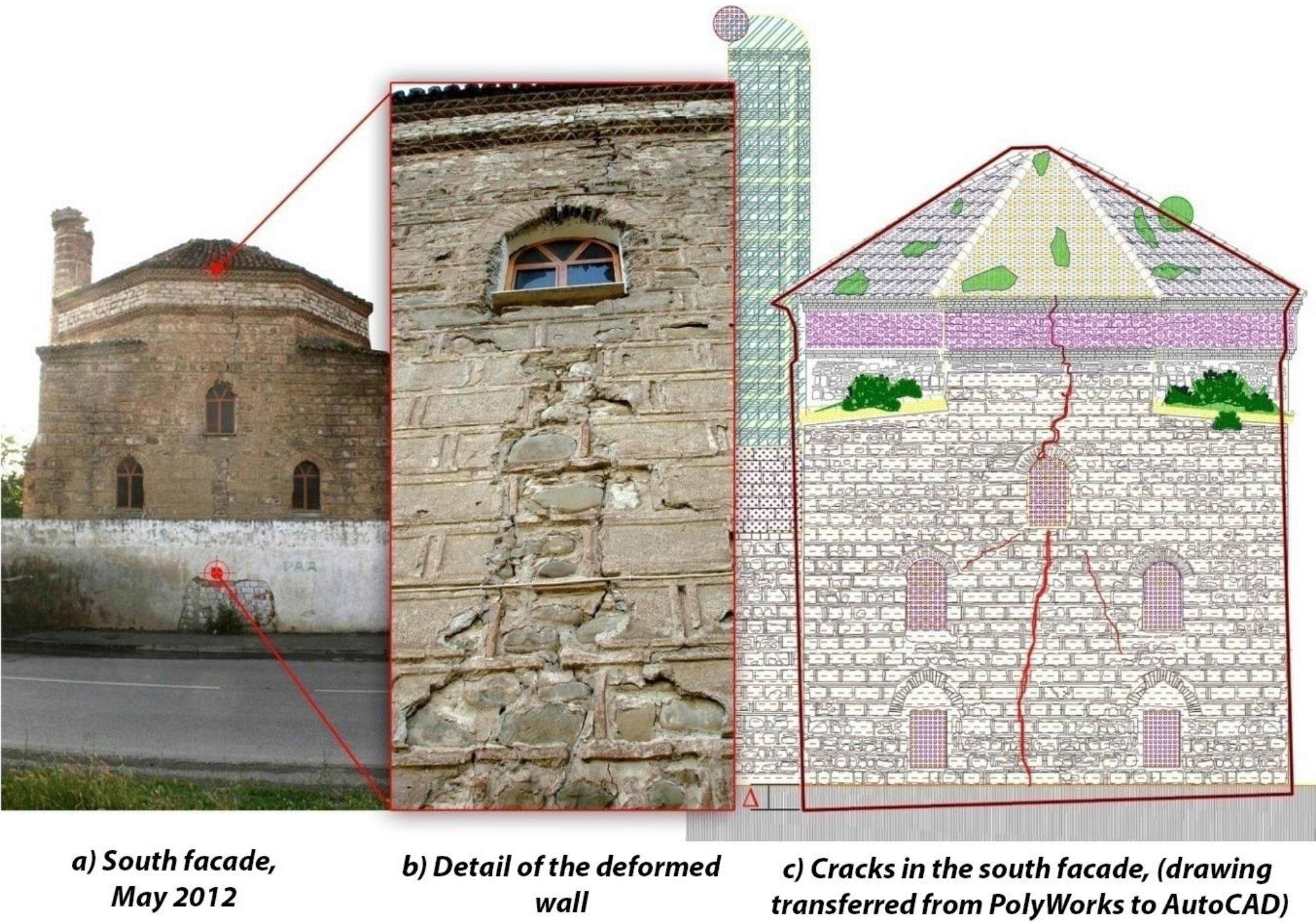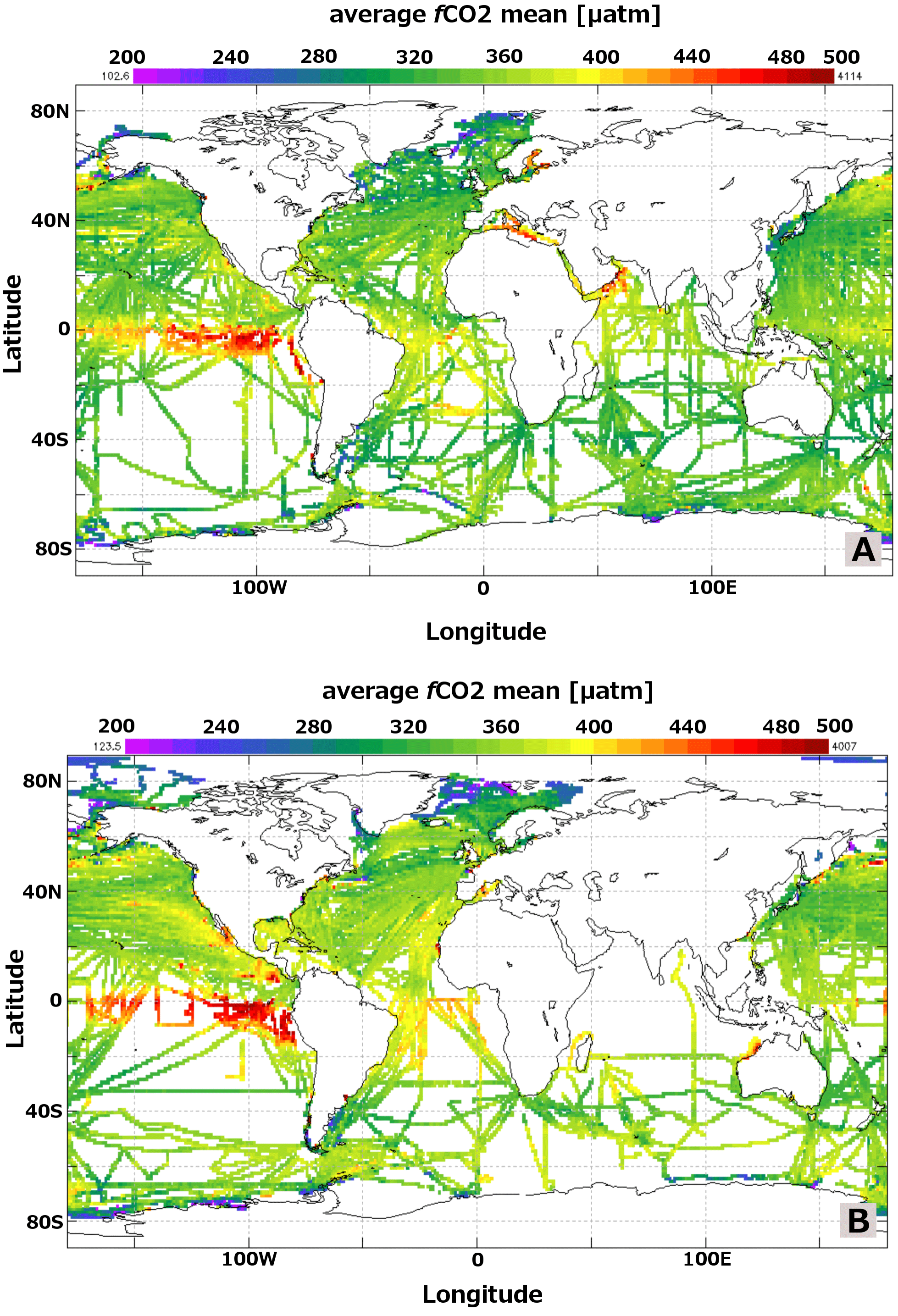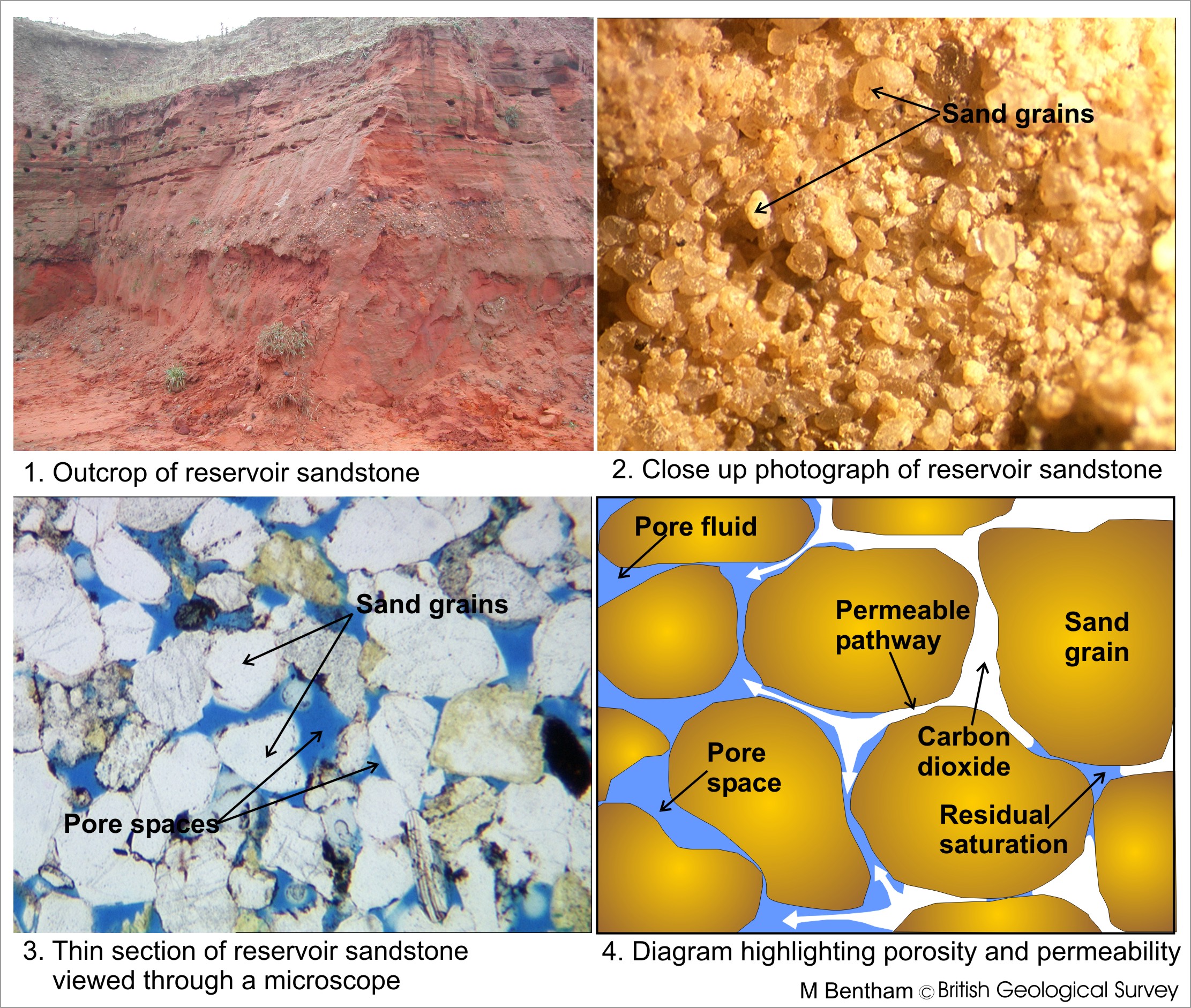by Daniel Keszthelyi
Physics of Geological Processes group at the Department of Physics, University of Oslo
Over 40 years of oil production from the Ekofisk field caused the overlying seafloor to sink over 9 meters during the years and while there have been numerous researches on the topic; the clear understanding of what happens with the reservoir rocks during production is still missing. We created a simple model of compaction with physics-based assumption to estimate the magnitude of the subsidence.
The Ekofisk field situated some 320 km off the coast of Norway is one of the largest petroleum fields of the country. Oil is produced from carbonate rocks (chalk) lying almost 3 km below the seabed to an oil platform standing in 76 meter deep water. The depletion of oil from the carbonate rocks caused a dramatic decrease in the pore pressure in these rocks and in turn a large increase in the effective stress acting to them. This increased effective stress then led to their compaction which was much more significant than expected by previous models.
The compaction has positive effect on the oil production as it pushes out oil from the rock; however it also puts at risk the surface facilities (oil platform and pipelines) and decreases the permeability of the rock making the flow of fluids inside them more difficult.
Our new model of compaction is based on very simple assumptions and describes rock as a collection of pores where these pores are material weaknesses. Imagine a sheet of paper with a small cut made in the middle of the paper. Then if you try to tear or shear the paper slowly you can see that this cut starts to grow until the sheet of paper is torn into two pieces. Similar things happen to the rock if effective stresses are increased: the pores – like the small cut in the middle of the sheet of paper – will become nuclei of new fractures and eventually a fracture network will be created. According to linear elastic fracture mechanics the larger the pore the less stress is needed to involve it into fracturing and vice-versa the larger the stress the smaller pores can be fractured: so with increasing effective stresses considerably more fractures can be created.

The Ekofisk field: location, mechanism of compaction and predicted subsidence (by Daniel Keszthelyi)
Fluids originally inside the pores can flow into these new fractures and if the fluid is water or partly water it can dissolve the material of rock: in carbonates calcite. The exact mechanism is called pressure solution which vaguely speaking means that the solubility of calcite depends on the pressure and therefore it can dissolve at grain-grain contacts along the new fracture and precipitate anywhere else. According to our model this dissolution will lead to the compaction of the carbonate rock.
The speed of dissolution can be calculated from pressure solution theories and the number of fractures can be calculated by statistical means and therefore the speed of deformation (the strain rate) can be predicted knowing some parameters without using any fitting parameters. All we have to know is porosity, pore size distribution, effective stress, water saturation, temperature and how the solubility of calcite depends on pressure and temperature: all of these can be measured independently in laboratory experiments.
If we apply this model to the Ekofisk field using an estimated pressure history of the reservoir we get quite good agreement with the measured subsidence values. This means that with a very simple model with no fitting we are able to predict the subsidence of the Ekofisk field. Furthermore, with simple modifications might also help to better understand other subsidence cases related to oil, gas or water production.
This post is based on the EGU talk Compaction creep by pore failure and pressure solution applied to a carbonate reservoir by Daniel Keszthelyi, Bjørn Jamtveit and Dag Kristian Dysthe. Daniel Keszthelyi is a PhD candidate at the Physics of Geological Processes group at the Department of Physics, University of Oslo. For further information please contact daniel.keszthelyi @fys.uio.no.





